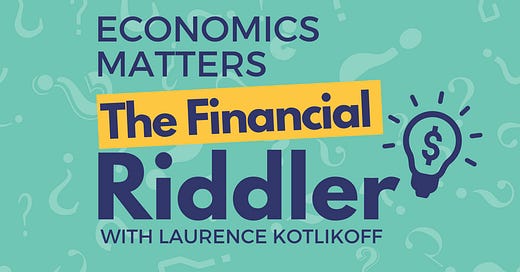How long is the longest train in America?
a. One mile
b. Two miles
c. Three miles
d. Ten miles
And the answer is …
It’s three miles. That’s long enough to delay first responders for an hour from reaching people who are on death’s door and who do, in fact, end up dying before the EMTs arrive.
Where does the U.S. rank with respect to maternal mortality rates among the 186 countries for which there are data on mothers dying in childbirth?
a. 1st best
b. 3rd best c. 20th lowest
d. 29th best
e. 62 best
And the answer is …
According to the CIA, the U.S. ranks 62nd, right behind the Gaza Strip. Bulgaria’s rate is one third that of the U.S. In order words, it’s three times safer to give birth in Bulgaria than it is in the U.S. Why is this? We’re supposed to have the best healthcare system in the world. Apparently not. Moreover, Black women are at greatest risk of dying while giving birth. Their death rate is three times that of white women! Among women with college or higher degrees, the black maternal mortality rate is a whopping 5 times higher than that for white women! Black women have roughly 50 percent higher risk factors. But that doesn’t explain a three-fold differential.
How low does the U.S. rank compared to other countries with respect to infant mortality?
a. 54th worst
b. 77the worst
c. 100th worst
d. 150th worst
And the answer is …
Again, according to the CIA, the U.S. is 54th worst. It’s over three times safer to be born in Slovenia than in the U.S. Black infants are twice as likely to die as white infants. Yet we are spending the highest share of GDP of any nation on healthcare — almost 19 percent. Well, not quite true. Tavalu spends 21 percent. Sweden spends only 11th percent of its GDP on healthcare, yet ranks 4th best in overall healthcare outcomes. The U.S. spends 8 percentage-points more of its GDP and achieves 21st best overall healthcare outcomes.
What is the year-to-date real (after inflation) return on the S&P 500?
a. 7 percent
b. 10 percent
c. 11 percent
d. 21 percent
And the answer is …
The answer is none of the above. The nominal YTD return is 10 percent. Since inflation has been running at roughly 5 percent, the real return has been roughly 5 percent.
Are you saving what’s needed to maintain your living standard through a lifespan that could last through age 100?
a. Yes
b. No
And the answer is …
The answer is surely no. The median net worth of those in their early sixties is only $150,000. That’s less than 2.5 years of median household spending, which totals $67,000. Yes, you are not typical. You are playing The Financial Riddler, which means you are interested in finance, including your own finances. Even so, I’m sure you are saving at least 20 percent less than MaxiFi Planner says to save. Buy the program and check. If you are saving 20 percent of the program’s suggested saving or more, email me at kotlikoff@gmail.com and you’ll get the license for free. If not, lower your maximum age of life until the program recommends you save what you are actually saving. That’s the age you have to die by in order to not suffer a drop, likely a major one, in your living standard in retirement. (MaxiFi’s Year at a Glance Report shows you how much to save outside of retirement account contributions. To calculate what you are saving this year, just calculate the increase in your non-retirement account net worth (your regular assets) and multiply by two, since it’s mid year.)
How are you determining how much to save?
a. Are you counting on Social Security and your retirement account to save everything you need?
b. Are you guessing how much to save?
c. Are you using a financial planner to tell you what to save?
d. Are you sure you will die young and don’t need to save?
e. Are you too scared to consider what you need to save because you won’t like the answer?
f. Are you sure you will be able to work until you drop?
And the answer is …
The answer is you are either taking your future seriously or are engaged, at some level, in all six of these behaviors. But what does taking your future seriously mean? Maybe it means you are making some calculations on your own or relying on a financial adviser who is using tools that are surely producing the wrong answer. Doing so likely won’t get you within a mile of the right answer? MaxiFi’s software, were it printed out, would encompass some 8 reams of paper. No one can get this critical decision right without spending decades with a good-sized team of software engineers and economists programming all the moving parts involved in lifetime financial planning. MaxiFi is the only economics-based financial planning tool on the planet. Don’t believe me re the difficulty of figuring out the right amount to save? Take this saving quiz that involves deciding what a simple family should save under various circumstances.
-Terry Savage, at terrysavage.com, and I are collecting Social Security horror stories. If you have one to share, please email it to terry@terrysavage.com.




